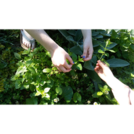
Conditional Remix & Share Permitted
CC BY-NC-SA
Students estimate the numbers of objects in situations in which counting is not feasible or necessary.
- Subject:
- Mathematics
- Material Type:
- Lesson Plan
- Author:
- Out Teach
- Date Added:
- 07/22/2021